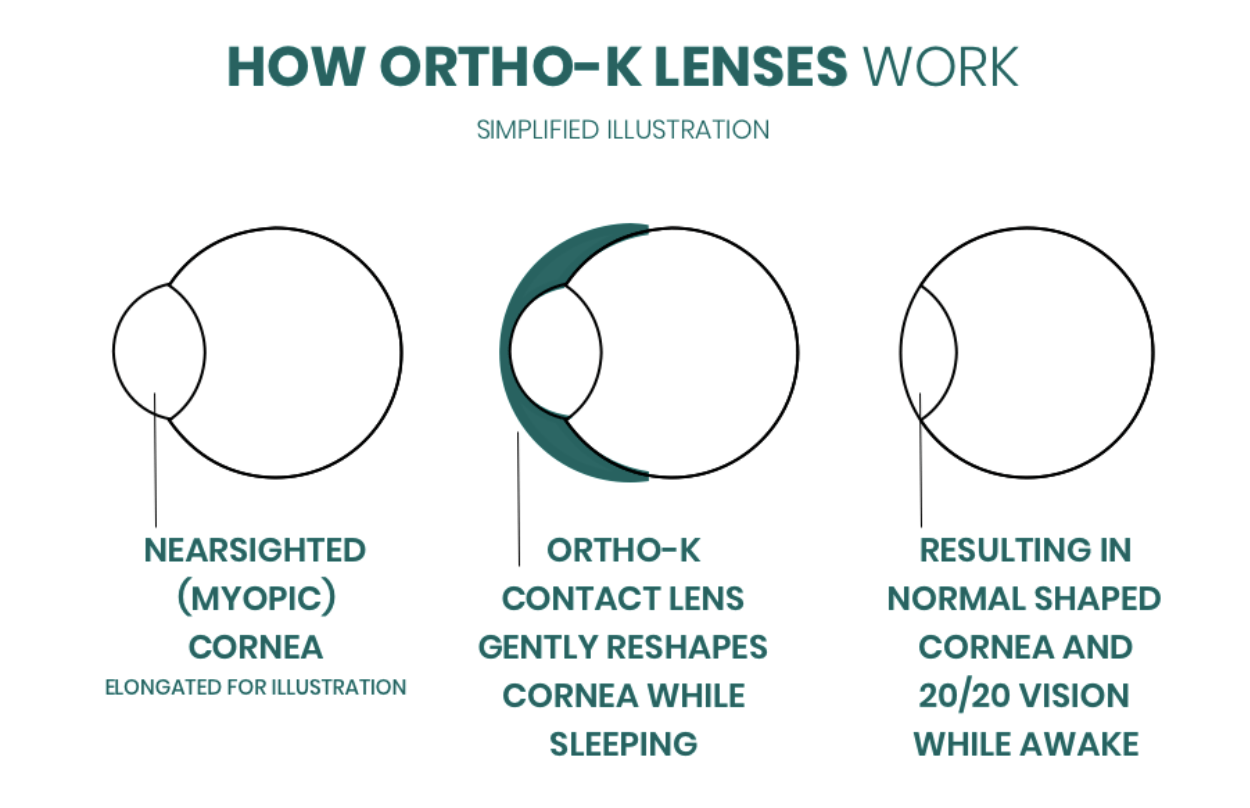Corneal Refractive Therapy (CRT)
How do CRT lenses work?
The hard lenses for CRT are applied at bedtime and worn overnight. While you sleep, the lenses gently reshape the front surface of your eye (the cornea) to correct your vision, so you can see clearly without glasses or contact lenses when you’re awake. The effect is temporary – generally enough to get you through a day or two – so you must wear the reshaping lenses each night to maintain good vision during the day. Patients in CRT can see clearly throughout the day without wearing glasses or contacts!

Corneal Refractive Therapy FAQ
CRT lenses are frequently a good option for nearsighted individuals who are too young for LASIK surgery or some other reason and are not good candidates for vision correction surgery. Because it can be discontinued at any time without permanent change to the eye, people of any age can try the procedure, as long as their eyes are healthy.
CRT is particularly appealing for people who participate in sports, or who work in dusty, dirty environments that can make contact lens wear difficult.
The goal of CRT is to correct your vision to 20/20 without eyeglasses or contact lenses during the day. In FDA trials of CRT, more than 65% of patients were able to achieve 20/20 visual acuity after wearing the reshaping lenses overnight. More than 90% were able to see 20/40 or better (the legal vision requirement for driving without glasses in most states).
Success rates for CRT tend to be higher for mild prescriptions. Call our office to find out if your prescription is within the range that can be successfully treated with CRT.
Though you may see some improvement in your vision after a day or two of overnight CRT, it can take several weeks for the full effect to be apparent. During this time, your vision will not be as clear as it was with glasses or contacts, and you are likely to notice some glare and halos around lights. You may need a temporary pair of eyeglasses for certain tasks, like driving at night, until your vision is fully corrected by the CRT lenses.
Some people have comfort issues when attempting to wear gas-permeable contact lenses during the day. But since CRT lenses are worn during sleep, comfort and lens awareness are generally not a problem.
CRT is a significantly longer process than a regular contact lens fitting. It requires a series of office visits and potentially multiple pairs of lenses. Also, hard lenses used for CRT are more costly than most regular contact lenses. Therefore, fees for CRT are higher than fees for regular contact lens fittings.
Yes, it’s possible to have LASIK surgery after CRT. But because CRT lenses reshape your cornea, you must stop wearing the lenses for a while (usually several months) so your eyes can return to their original shape and stabilize. Be sure to tell your LASIK surgeon that you’ve worn CRT lenses, so they can advise you how long you should wait before having the surgery.

